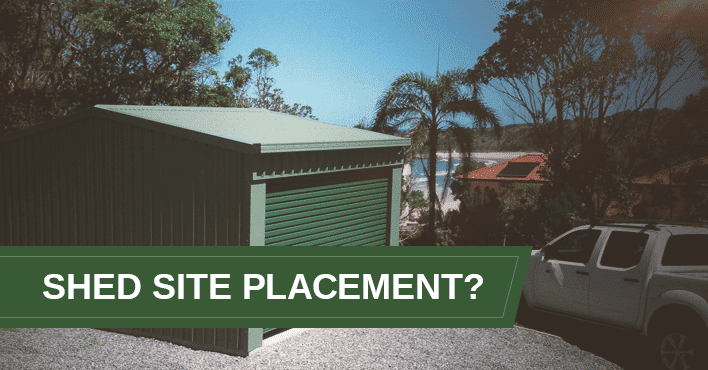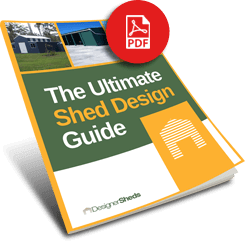
If you’re like most shed builders, I’m guessing you want your shed to last a long time. Planning any shed project starts with choosing the best site placement for your shed, because if you get that wrong, you may be looking at the consequences for a long time to come!
Here are 10 of the most important factors to consider when choosing your shed site:
- Access to property: This is particularly important when building your shed. Is there easy access for a crane, scissor lift, generator, and room around the shed for scaffolding? A cramped or inaccessible shed site can create building headaches.
- Turning circle: Be sure to position your shed with enough room for vehicles to easily enter the doorways. If you’re looking to store boats, caravans or trailers etc., then the turning circle has to be wider still.
- Slope: Concrete slabs and footings may cost more on steep slopes, and may affect ease of moving vehicles and other items in or out.
- Access angles: If the slab is level and the driveway up to the doors is steep (either up or down) the door height will need to be increased for clearance. If the change of angle (between the driveway and slab) is too great, it may cause vehicles to scrape on the ground. This is especially important for vehicles with a low ground clearance. Related to this, you also need to consider your door design.
- View: Consider what your new shed will look like from all angles. Ask yourself; will it block any views (for you or your neighbors)? You might also want to show off your new shed by ensuring that your shed has the same color as your other property, or building a pathway from your house. Not only will it look nice, but it’ll surely be adding value to your property.
- Council regulations: As well as council zoning and intended use for your shed, you will need to be aware of council requirements, including distance to boundaries and easements, and regulations regarding bushfire prone land and exemptions. You might also want to consider the distance of your shed to the nearest property or fence, and potential placement stipulations. Each of these factors will usually be considered as part of the shed council approval process. We can help guide you through council regulations for a quick, hassle-free approval.
- Underground Utilities: It is better to be safe than sorry. Make sure that your shed is not built on top of buried power lines, pipelines or utilities. Therefore, we recommend calling your local council before digging and building your shed.
- Water collection points: Avoid points like the bottom of a hill, low-lying area, watershed, or other areas that tend to gather water. Moist and humid areas are the perfect place for mold and mildew to grow and potentially damage or rot the valuable items stored in your shed.
- Sunlight: Depending on the purpose of your shed, determining the position of the sun with respect to your shed is important to think about. In some cases you may wish to maximise light and heat from the sun, and in other cases minimise it.
- Security: If you want to store valuable assets in your shed, consider building it in a location that’s visible from your house. Don’t forget to install strong locks, security lighting and/or a security system to protect it. If security is a concern, minimising window area or installing security roller shutters over windows may be worth considering.
Shed site placement is just one factor to consider when building your shed. Once you have an idea of your shed site, contact us to schedule a free Shed Design & Quote Session. We’ll help bring your shed design to life and provide input into the best design, placement and configuration to make your shed awesome.















Leave a Reply